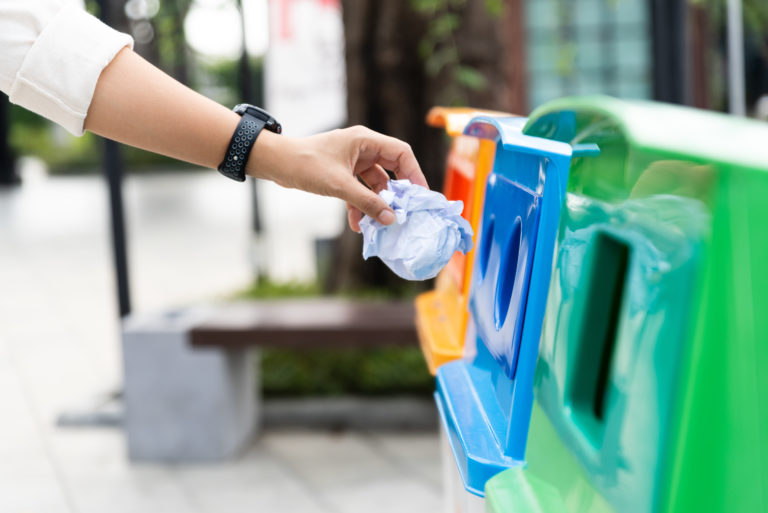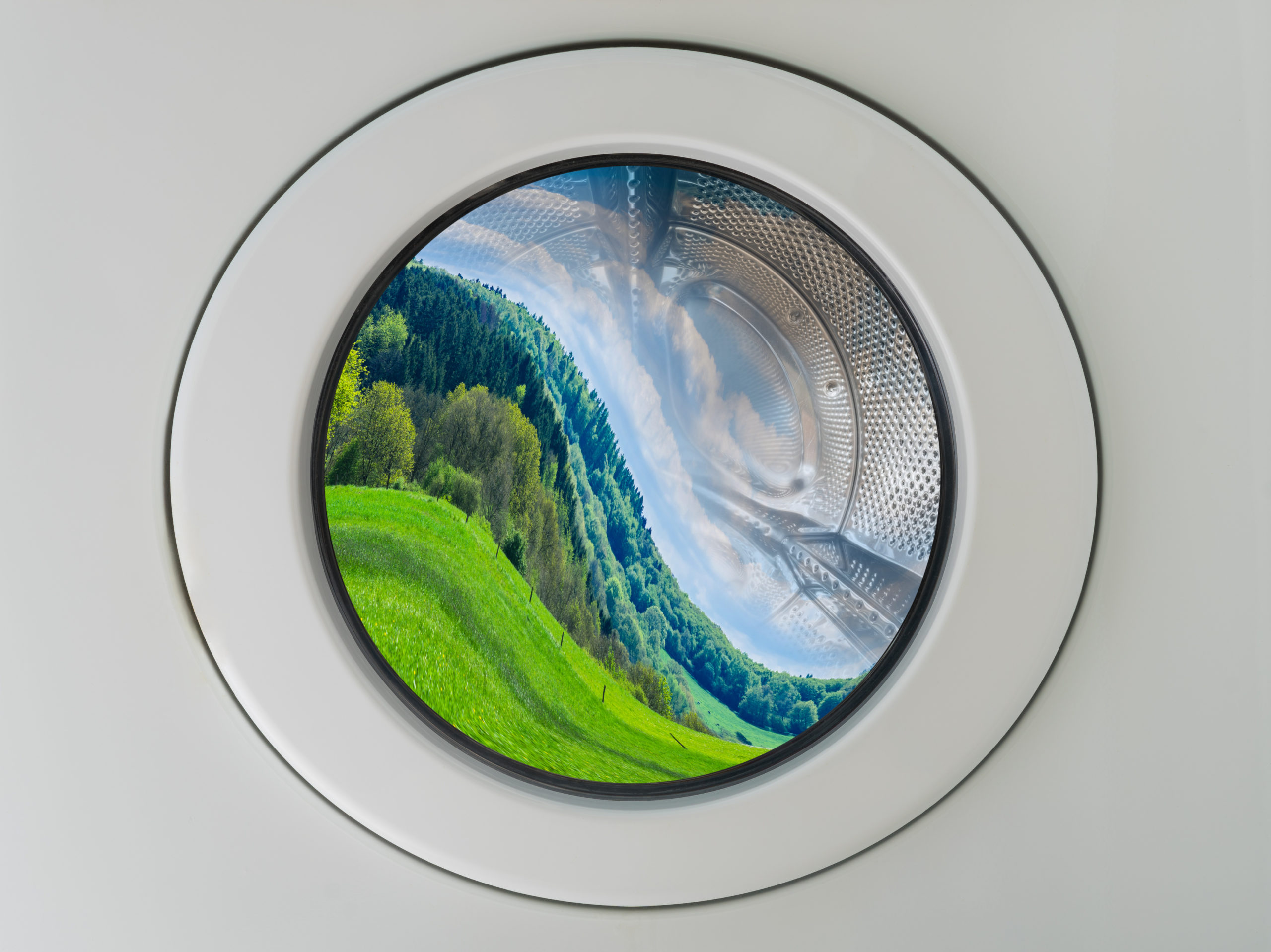
What is “Greenwashing” and are you falling prey to it?
Think about a landfill. Trash, trash and more trash, right? But what if you peeked into that pile and saw last week’s bag of recycling? Or the biodegradable products that you paid extra for, lying next to soiled pizza boxes and old tennis shoes? We all try to do our part for the environment, but often, it makes less of a difference than you think.
Unfortunately, many of the items we believe to be environmentally friendly actually are not. While some of the confusion simply comes from misinformation, a nefarious form of direct manipulation called “Greenwashing” is very prevalent!
Greenwashing Examples You’re Probably All Too Familiar With
You should be aware of the many Greenwashing examples that we all experience regularly.
Greenwashing is a tactic in which companies falsely claim green ties to get you to buy their products. In reality, their actions and products do nothing to help the environment. Here is our list of some of the biggest eco-friendly fakes, as well as a few solutions to help avoid them:
1. That’s probably recyclable…
The more you recycle the better, right? Apparently not always.
Introducing the first of the eco-friendly fakes. Contaminants (or non-recyclables) in your recycling contributions create massive disruptions in the recycling process. Recycling plants not only have to sort out your garbage, but also have to dispose of it themselves. Coffee cups, paper towels, Styrofoam, sandwich, and garbage bags all create more work and ultimately less recycling. And it gets worse. If the plant misses a non-recyclable (like your little snack baggies), the soft plastic gets stuck in the machinery, clogging and halting the process altogether. Selecting the correct recyclables is key to successfully helping the environment.

As China halts accepting imports of plastic waste, cities are hard-pressed to adopt new recycling policies that fit within their restricted budgets. The New York Times recently reported that, “hundreds of towns and cities across the country have canceled recycling programs, limited the types of material they accept or agreed to huge price increases”. Even when you recycle correctly, it might not be able to be processed in your area.
Solution: Don’t rely on recycling! Avoid buying plastic when possible and reuse what you have.
2. Is your cotton tote bag really worth it?
Sorry to burst your environmental bubble, but another massive green illusion rests in the “reusable tote bag”. Yes, they do reduce the amount of plastic grocery bags you take home. But the question is: at what cost? Resources are also poured into making your reusable bag, often more than its plastic counterpart. A study concerning the effectiveness of reusable bags found that in order to equal the environmental impact of a single plastic bag, a cotton tote had to be used at least 7,100 times. With organic cotton, the bag would have to be used 20,000 times. Pretty much, your great-great grandkids would have to still be using the bag for it to have any impact.
Solution: Forget about organic cotton! That environmental study found that paper bags and plastic-based reusable totes required between 35 and 85 re-uses to be efficient. Just don’t forget them in your cupboard!
3. Speaking of which, how about paper straws?
Continuing with the most popular environmental trends, how much are your paper straws helping? The response is mixed, much like the reusable tote. Paper is ultimately biodegradable and potentially better for the environment. But just because they are less harmful than plastic straws, does not mean they are not harmful. For example, the production of paper straws emits more greenhouse gases than the production of plastic. Also, generally paper requires more resources and energy to manufacture than plastic. But they say that paper is better because it’s biodegradable, right?
Just because an item is biodegradable does not mean it is going to biodegrade. Paper straws are most likely to end up in the normal trash bin and then a landfill. Landfills are created to be anti-biodegradable. This means all those paper straws will be packed and sealed away without the ability to break down.
Solution: Just don’t use them! If you absolutely need a straw, use a glass or metal one. Again, remember to bring it with you.
4. Greenwashing…Hmm?
Green logos, green packaging and even green products can make you feel like you are going the extra mile to save the environment. Unfortunately, that’s often not the case, as these companies might be greenwashing. Many companies have become infamous for using green promises to influence your purchase while failing to deliver. There are more examples than we could ever list in a blog, but here are a couple that may get you riled up:
-Huggies Pure and Natural – While you would think these neatly green and white packaged diapers are a perfectly natural solution for your child, you would be very wrong and most likely quite disappointed. The University of Cincinnati found that the super organic cotton was only used on the OUTSIDE of the diapers. All the same chemicals of regular diapers (polyacrylate, polypropylene, and polyethylene) were on the inside. The part touching your precious baby, that is. The verdict? Greenwashing.
-Aveeno – Say it ain’t so, Aveeno. Yep, this brand’s tagline “Active Naturals” falls far away from natural ingredients. A class-action suit was filed against the company for their use of glycerin, cetyl alcohol, sodium hydroxide, and other synthetic ingredients. Many beauty companies utilize these ingredients, but this brand fools you into seeing more green than there is. Yet another example of shameless greenwashing.
– Kauai Coffee 100% compostable coffee pods – These pods claim to take the guilt out of single-use pods with their totally compostable design. As it turns out, the pods are compostable, but only at extremely specific industrial facilities – facilities that are, as you can imagine, not very common.
Solution: Read the packaging before you buy. Also, don’t hesitate to do a quick google search to find out more about the company. Knowledge is everything!
5. ESG Investment Portfolios
The latest industry to jump on the Environmentally friendly bandwagon is the investment industry. Over the past few years, there has been a huge increase in so-called “ESG” funds. These funds are weighted toward companies that score high on a broad range of Environmental, Social, and Governance criteria. While this helps investors ensure their money is going to more responsible companies, the wide scope of evaluation metrics can cast such a large net that it may result in so-called “Environmentally Responsible” portfolios holding companies that aren’t really all that environmentally sound.
Solution? Look under the hood of these “ESG” investment options, starting with our “Demand Green” portfolio, to ensure that your investments align with your ESG principles and are genuinely committed to environmentally conscious investing. We follow SEC “Greenwashing” guidelines closely so that you get the peace of mind that your money is actually making a responsible difference.
Schedule a video conference today with one of our advisors about constructing a comprehensive financial plan and Green investment strategy that align with your values and personal financial goals.
This report is a publication of Demand Wealth. Information presented is believed to be factual and up-to-date, but we do not guarantee its accuracy and it should not be regarded as a complete analysis of the subjects discussed. All expressions of opinion reflect the judgment of the author as of the date of publication and are subject to change.

